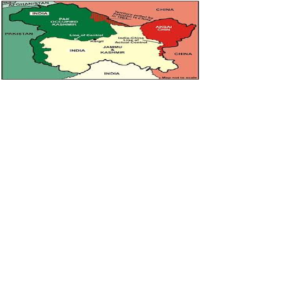India-China War 1962:
Why in News?
The boundary dispute that led to the 1962 war with China remains unresolved.
REASONS FOR THE WAR:
- Historical legacy: The border between India and China remain disputed from pre-independent India
- In the eastern sector, the McMahon Line had been drawn in 1914 without even a survey and taking China into confidence.
- Aksai Chin and Arunachal Pradesh: The main reason for the Indo-China war was a dispute over the sovereignty of the widely separated Aksai Chin and Arunachal Pradesh border regions.
- Claim over territories: India claimed Aksai Chin to be part of Ladakh whereas China claimed it as part of Xinjiang.
- India’s intelligence failure: India remained unaware that this area was already in use by China.
- The Chinese built a 220-km-long road there only after the completion of the project was announced in 1957.
- Failure at leadership:
- Tibet agreement in 1954: India consciously avoided discussions about the border, leaving the boundary question open.
- The meeting between Nehru and Chinese Premier Zhou Enlai: It failed to bridge their differences.
What went wrong in the war?
- India had misguided optimism about the ‘moral’ superiority and peaceful intentions of the Chinese leadership: It resulted in a weak Indian Army that was ill-prepared and ill-equipped to face the realities of hard power.
- Underestimation of the strength of the Indian Air Force (IAF): which resulted in its offensive fleet not being used.
- Political interference in affairs was purely military mismanagement of events from the top.
Result of the war: China emerged victorious. It occupied a large part of Ladakh and Arunachal but eventually returned to territories occupied in Arunachal but retained control of about 38,000 square kilometres of Aksai Chin in Ladakh.
Impact: It severely demoralized the Indian army, showed its weakness ( eventually leading to war with Pakistan in 1965) and led to decades of handicapped relations with China.
Agreement between India and China:
- ‘Maintenance of Peace and Tranquillity’ (1993)
- Military CBMs (1996)
- Political Parameters and Guiding Principles for the settlement of boundary question (2005)
- Border defence cooperation (2012)
Mains Links:
- ‘China is using its economic relations and positive trade surplus as tools to develop potential military power status in Asia’, In light of this statement, discuss its impact on India as her neighbour. (UPSC Mains 2017)
- Strong diplomacy, coupled with enhancing military capabilities to counter Chinese aggression in border areas should be the way going forward to deal with China. Discuss.




